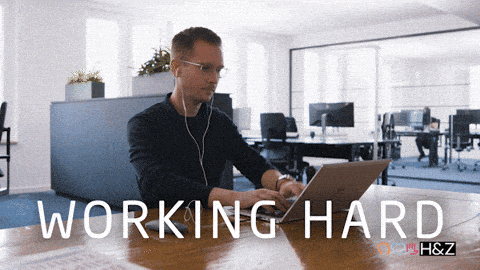- The 2x2
- Posts
- Make It Official
Make It Official
Welcome back to The 2x2 - the ultimate newsletter for executive consultants!
How do I set up an LLC?
It’s one of the most common questions I see in consultant and fractional group chats.
Yes, it matters - but there are other questions you should ask too… Read on.
⏰ Today in 5 minutes or less:
Your first order of business should be to set up a legal entity – LLC with an S-Corp Election is my go-to.
Understand why an S-Corp matters to your bottom line – hint, it’s about creating valid tax expenses.
Use the ROIC framework in your client work to track where the money goes.

Lay the Groundwork Right: How I Built a Sustainable Business Practice
Are you running a business or are you just freelancing with extra steps?
Landing my first client was my first win, but things can get messy fast.
That’s when I realized I needed a structure if I want my business to last.
There’s no HR manual or IT team when going solo.
Everything – taxes, contracts, marketing – is with me.
But here’s the silver lining – a little upfront work makes everything easier in the long run.
Here’s how I set up my business for the long haul, and how you can make it happen too.
1. Forming an LLC Protects an Indie and Their Business
Once I decided to build a business, I also had to set it up as one.
Business entities have their own set of rules and regulations for individuals, allowing them to enter contracts, own properties, or initiate legal actions as needed.
But more importantly, being a legal entity meant protecting myself against personal risk.
There are different entity types to choose depending on the indie’s needs and aspirations, but I recommend forming a Limited Liability Company (LLC) with an S-Corp Tax Election.
This entity type and tax election sends a clear message to my potential clients: my work for you is professional and of the utmost importance.
Trust me – clients appreciate receiving invoices from a registered business than an individual’s name.
2. Understanding the Tax Benefits and Allowable Expenses
Owning a business means I’m eligible for a whole new set of allowable deductions.
Small businesses are the backbone of American economy, that’s why our tax code is purposefully written to encourage people to build a business.
That’s capitalism, folks.
But it’s not about hacking the system, it’s about taking advantage of what’s already there.
Indie consultants could talk to a tax specialist to get them through the tax maze, but here are some of the basic deductions that might be useful:
Home Office Deduction, for consultants using a part of their home exclusively for business and on a regular basis.
Furnishings and Equipment, for all equipment purchased to work productively and professionally in a home office – including computers, internet service, monitors, desk, chairs, and other furnishings.
Office Lease, for the rent needed to run a business – if the rent is reasonable.
Transportation Expenses, for car or transportation expenses used for business.
Professional Services, for expert facilitators who help enhance business ops and productivity.
Continuing Education, for costs incurred to maintain or improve skills relevant to the current consulting work.
3. Opening a Business Bank Account Keeps Everything Organized
In the early days when money is tight, it can be tempting to mix business and personal finances.
But that’s a pitfall right there.
Eventually, the tangled-up books and accounts will bite back during tax season.
The solution? Separate finances from the start. Talk to an accountant if you must.
For me, QuickBooks became the best solution for setting up an accounting system early – after all, it is the gold standard of bookkeeping.
Opening a dedicated bank account also kept my finances organized, making tax season a bit less of a headache.
Aside from the practicality, a separate bank account also showed that I’m serious about my business – it just looks a lot more professional when invoicing from a business account instead of a personal Venmo.
The key is to build a system before you drown in invoices and receipts.
4. Getting an Insurance Policy to Plan for the Unexpected
Things like professional liability insurance weren’t a problem when I was working corporate.
But as an indie consultant, everything became my responsibility – including contracts, risks, and health coverage.
The primary legal risk that indie consultants might face is Errors and Omissions (E&O) claims, which are related to mistakes in their work.
But as a separate legal entity, these claims would be attributed to the business instead of the consultant themselves. Any compensation required will come from the business and wouldn’t affect their personal assets.
Forming a business entity provides some level of protection, but you’ll be glad to have additional insurance when something unexpected happens. In some cases, corporate clients might even require business insurance before signing a contract.
Insurance isn’t the most exciting part of indie consulting, but it’s definitely a smart investment to make early on.
5. Replacing Employer Benefits for a Secured Future
Another big shift when transitioning to independent consulting is that no one sets up your benefits for you.
And while it’s easy to put off, you’re better off organizing it earlier than later.
For indie consultants, we’re eligible for a solo 401(k) or a SEP IRA.
What’s great about these retirement options is that they allow higher contributions than the traditional ones.
Setting up a retirement account isn’t just about saving money – it’s also investing in a future that I wasn’t just freelancing to get by. It’s about building a business that’s sustainable.
6. Investing in the Right Tech Makes Work Easier
Efficiency matters, especially for indie consultants – and the right tools make all the difference.
For me, a fast laptop and strong internet were non-negotiable.
Clients pay for my expertise, so they deserve smooth video calls, quick responses, and seamless collaboration from me. Aside from the frustrations I experienced, I realized that a slow computer and a choppy Wi-Fi will cost me my credibility.
Beyond the basic hardware, investing in communication and cybersecurity software was also crucial because I’m handling sensitive data from clients.
Productivity apps like Asana also saved me on multiple occasions by keeping me on track and letting me run my business like a well-oiled machine.
7. Using Basic Marketing Strategies Improves Visibility
A lot of consultants assume that great work would speak for itself.
Clients would be impressed. They would refer the consultant to other people. Word would spread, and business would flow in.
Ideal, but wrong. Dead wrong.
The reality is that even the best consultants need to market themselves.
At its root, basic marketing meant getting yourself out there and letting everyone know about the new venture.
For me, it meant reaching out to my connections and showing up where my potential clients are.
I made some calls to my network until I found people who have problems I could help solve – or at least know other people who do.
I also made the effort to improve my LinkedIn profile.
I committed to crafting a crystal-clear headline and bio, posting insights, engaging with my network, and making sure people knew my work.
Over time, those small actions built my credibility and online presence.
I haven’t had to show my resume in a long time, but potential clients can look up my LinkedIn profile and see my qualifications (plus some proof and reviews from previous clients).
Keep Your Business Standing (for a Long Time)
These steps might not help you land clients, but they ensure that you’re running a real business.
Gone are the days where you scramble to survive gig after gig.
Setting up the right structures early gave me the stability to grow Keenan Reid Strategies into the seven-figure consultancy it is today.
I invested in that foundation, and success followed.
It can happen to you too.
For a more detailed guide to business startup and tax planning, check out our playbook here.

Framework Focus: ROIC
Are your clients actually making money – or just spending it?
Consultants, your advice moves millions. Maybe even billions of dollars.
If you’re helping a client spend wisely, try using the ROIC Framework.

Instead of simply showing how much money was made, this framework visualizes how hard the money is working.
By looking at every dollar invested and the profit, consultants can determine if there’s a better use for every penny spent.
Said differently, ROIC measures the efficiency of the businesses’ profit generation engine.
Imagine a consultant working with a mid-market software company.
The client keeps expanding into new markets, but it seemed like the profits weren’t generating the return they should have been.
If the sales were growing, why was cash disappearing?
The consultant stepped in with the ROIC framework and found the issue: over-investing in the mid-market sales team while the enterprise clients drive twice the return.
Misallocation of funds drained working capital, driving down ROIC.
And so, the consultant reallocated the budget to better opportunities.
The result? The company increased profitability by 12% in 6 months – without the need for additional revenue.
By using the ROIC framework, the consultant didn’t just solve the problem and gave advice – they made the numbers work.
Download our template here.

💼 See if you’re qualified…

Remember, the path to success is paved with continuous learning and embracing fresh perspectives.
Let's stay connected, share ideas, and elevate your consulting business.
Stay curious, friends.
The 2×2 is brought to you by Keenan Reid Strategies
Having trouble viewing this email? Check out this and past issues on our website.
Was this newsletter forwarded? Someone is looking out for you. You should definitely subscribe!


